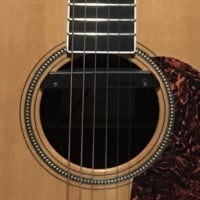Welcome! Here are the website rules, as well as some tips for using this forum.
Need to contact us? Visit https://heatinghelp.com/contact-us/.
Click here to Find a Contractor in your area.
For OR t-stat anticipator set to primary control or circs?
Options

D107
Member Posts: 1,849
I'll be buying a new t-stat--I like the kind with anticipators--and ordinarily instructions say to match the anticipator setting with the amperage on the oil primary control--in my case Riello 40 F3, which i believe runs at 2.2amps. However in the case of outdoor reset, the t-stats do not control the burner, they control the circulators via the
<a href="file:///Users/davidgoldman/Library/Caches/TemporaryItems/msoclip1/01/clip_filelist.xml"></a>
<span style="color:#000000">SR503-EXP
Switching Relay</span>
--a Taco 007 circ--rated at .71 amps; I'm sure that's too low an anticipaator setting for my system, so what is the rule here?
Thanks,
David
<a href="file:///Users/davidgoldman/Library/Caches/TemporaryItems/msoclip1/01/clip_filelist.xml"></a>
<span style="color:#000000">SR503-EXP
Switching Relay</span>
--a Taco 007 circ--rated at .71 amps; I'm sure that's too low an anticipaator setting for my system, so what is the rule here?
Thanks,
David
0
Comments
-
Anticipator ??
If you use a stat with a mechanical anticipator like the old Honeywell T87F2873 you must match the anticipator setting to the load of the control you are wiring it to. The Taco relay will show the amperage draw on the device. If you use a digital stat you then match the cycle rate to the type of heating system you are installing the stat to. Both do almost the same thing too.0 -
I've never understood
the reason to set the anticipator to the load.Perhaps somebody could explain it to me? I think it is generally just a good place to start. After all, how does the electrical draw know if I firing heavy cast iron radiators, or light copper ones. How does the electrical load determine how much retained heat I can anticipate from the radiators and fluid? Why would the thermostat care if I was controlling the gas valve directly, or using a relay,
I'm also not sure how cycles per hour is the same as anticipating heat. I'm trying to figure these things out. But I'm just a home owner, not an expert, so I set by trail and error (a luxury a visiting pro does not have). I've yet to find any clear explanation of how either of these systems actually work. I think I understand the concepts, but not the inner workings, and for me at least the inner workings would be useful. I'm thinking about converting from an old electromechanical anticipator type thermostat to one of these new fangled automatic setback thermostats (which use cph).0 -
The anticpator is
a variable resistor as you move up scale toward 1.2 you get a longer cycle because you are putting less resistance therefore dissipating less heat onto the bi-metal coil which is actually what controls the thermostat. Longer cycles means less cycles per hour. By putting false heat from the resistor (anticipator) we affect the accuracy of the thermostat to prevent "overshoot" and "lag". A straight bi-metal with out anticipator is only accurate to within 2 degrees. The anticpator brings the accuracy to about 1/2 degree.
Going the other way down scale we put more resistance in the circuit which will put more heat on the bi-metal hence shortening the cycle. Therefore more cycles per hour.
A conventional system set correctly matching the amperage draw of the primary control such as gas valve, relay, zone valve, vent damper or zone damper to the thermostat will give about 6 cycles per hour at 50% of heating load.
This is as accurate as we have been able to get in the past. Today with all the new types of thermostats along with indoor and outdoor reset we can control temperatures much better.0 -
The Taco 503 draws.18
amps the anticpator can't go that low so set it to the lowest setting. The Riello unit draws .2 amps.0
This discussion has been closed.
Categories
- All Categories
- 85.2K THE MAIN WALL
- 3.1K A-C, Heat Pumps & Refrigeration
- 55 Biomass
- 424 Carbon Monoxide Awareness
- 73 Chimneys & Flues
- 1.9K Domestic Hot Water
- 5.2K Gas Heating
- 130 Geothermal
- 160 Indoor-Air Quality
- 3.3K Oil Heating
- 61 Pipe Deterioration
- 884 Plumbing
- 5.9K Radiant Heating
- 376 Solar
- 14.7K Strictly Steam
- 3.2K Thermostats and Controls
- 59 Water Quality
- 49 Industry Classes
- 89 Job Opportunities
- 28 Recall Announcements